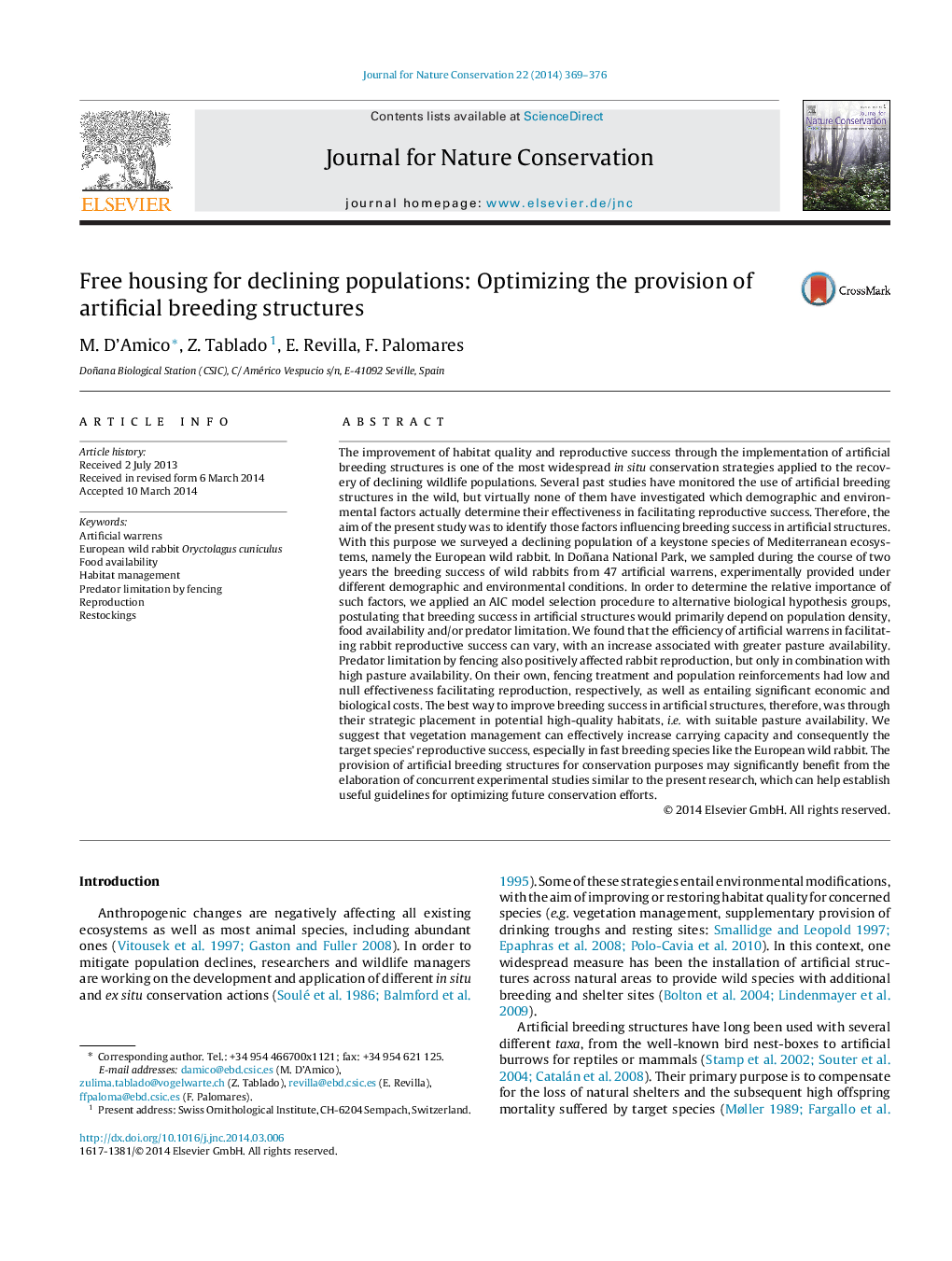| کد مقاله | کد نشریه | سال انتشار | مقاله انگلیسی | نسخه تمام متن |
|---|---|---|---|---|
| 4399872 | 1306890 | 2014 | 8 صفحه PDF | دانلود رایگان |
The improvement of habitat quality and reproductive success through the implementation of artificial breeding structures is one of the most widespread in situ conservation strategies applied to the recovery of declining wildlife populations. Several past studies have monitored the use of artificial breeding structures in the wild, but virtually none of them have investigated which demographic and environmental factors actually determine their effectiveness in facilitating reproductive success. Therefore, the aim of the present study was to identify those factors influencing breeding success in artificial structures. With this purpose we surveyed a declining population of a keystone species of Mediterranean ecosystems, namely the European wild rabbit. In Doñana National Park, we sampled during the course of two years the breeding success of wild rabbits from 47 artificial warrens, experimentally provided under different demographic and environmental conditions. In order to determine the relative importance of such factors, we applied an AIC model selection procedure to alternative biological hypothesis groups, postulating that breeding success in artificial structures would primarily depend on population density, food availability and/or predator limitation. We found that the efficiency of artificial warrens in facilitating rabbit reproductive success can vary, with an increase associated with greater pasture availability. Predator limitation by fencing also positively affected rabbit reproduction, but only in combination with high pasture availability. On their own, fencing treatment and population reinforcements had low and null effectiveness facilitating reproduction, respectively, as well as entailing significant economic and biological costs. The best way to improve breeding success in artificial structures, therefore, was through their strategic placement in potential high-quality habitats, i.e. with suitable pasture availability. We suggest that vegetation management can effectively increase carrying capacity and consequently the target species’ reproductive success, especially in fast breeding species like the European wild rabbit. The provision of artificial breeding structures for conservation purposes may significantly benefit from the elaboration of concurrent experimental studies similar to the present research, which can help establish useful guidelines for optimizing future conservation efforts.
Journal: Journal for Nature Conservation - Volume 22, Issue 4, August 2014, Pages 369–376
